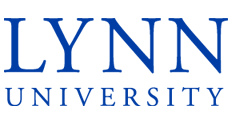Graduate Student Dissertations, Theses, Capstones, and Portfolios
Date of Award
2015
Document Type
Dissertation
Granting Institution
Lynn University
Degree Name
Doctor of Education (EDD)
Degree Program
Educational Leadership
Department
College of Education
First Advisor
Joseph Melita
Second Advisor
Korynne Taylor-Dunlop
Third Advisor
Kia Allen
Abstract
In recent years, the rapid development of information and communication technology has facilitated a convergence between face-to-face and technology-mediated learning environments. In addition, the impact of learning environments in relation to learning outcomes has constantly been explored by researchers and is a constant concern amongst teachers as they seek to improve student learning outcomes in their classrooms. According to a 2003 National Research Council report on motivation (i.e., student satisfaction), lack of motivation is a real and pressing problem in the traditional classroom. Upwards of 40 percent of high school students are chronically disengaged from school.
Nonetheless, there is a progressive frontrunner to traditional education that has made noteworthy strides towards increasing student satisfaction and achievement. This frontrunner is known as blended learning education. Blended learning offers the advantages of online learning with the effective aspects of traditional education, such as face-to-face interaction. For at-risk learners - students and school-age youth who are under-performing academically, may have learning disabilities, emotional or behavioral problems, or may be deliberate or inadvertent victims of the behavioral problems of others - blended learning is an important, and transformational tool in maintaining student satisfaction and increasing student achievement in an alternative learning environment. In regards to student satisfaction, this is considered an important factor in measuring the quality of blended learning.
The purpose of this action research study was to (a) assess student satisfaction in relation to student achievement in a blended learning environment with at-risk high school students, and (b) evaluate faculty and student perceptions of blended learning education. The study consisted of a mixed-methodology, non- experimental, research design. The accessible population for this study consisted of at-risk high school students (15 – 20 years old) and eight faculty members (i.e., certified teachers) at an alternative charter school in the southern region of the Palm Beach County School District. For qualitative purposes, the data collection consisted of student and faculty surveys complemented by individual and focus group faculty interviews based upon survey responses. The student survey contained LIKERT scale questions based upon five student satisfaction factors: instructor facilitation, ease of technology, level of interactivity, course management issues, and instruction. In addition individual and focus group faculty interviews allowed faculty participants to further expand upon the written response survey questions.
For quantitative purposes, data collection involved analyzing participant’s final scores in completed courses throughout the school year. Based upon the percentages of the final scores (utilizing a grading scale of 0-59% = F, 60 – 69% = D, 70 – 79% = C, 80 – 89% = B, 90 – 100% = A), student achievement can be determined by the number of passing scores (70% or higher) that the student participant attained as their final mark in the course. Provided a student participant responds positively on the Blended Course Student Survey, then their final course grades should also reflect positively with final course grades of 70% and above; indicating a successful correlation between student satisfaction and student achievement utilizing blended learning as an alternative education for at-risk students.
Recommended Citation
McCoy, D. J. (2015). Evaluating Faculty and Student Perceptions of Blended Education to Determine and Measure Student Satisfaction in a Blended Learning Program with At-Risk High School Students [Doctoral dissertation, Lynn University]. SPIRAL. https://spiral.lynn.edu/etds/314



